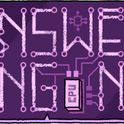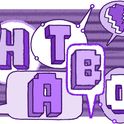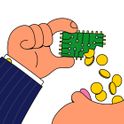The Nobel prize in physics is anticipated with some trepidation by news reporters, as it is often the most fiendishly difficult of the prizes to explain. For some of the recent physics Nobels there were several layers of fearsome technicalities to penetrate even to understand the words in the Swedish committee’s single-sentence precis of the winners’ achievement. The recondite but brilliant work of Italian physicist Giorgio Parisi, one of last year’s laureates, was all but ignored as reporters jumped with relief on the fact that the other two winners had clearly done something related to climate change.
The work that has just won this year’s prize might also be seen as one of those choices that is hard to express in breezy prose. The award is for experimental studies of a phenomenon called “entanglement” that arises in the notoriously baffling and counterintuitive field of quantum mechanics, the theory that we must use to describe the properties and behaviour of tiny objects like atoms and their constituent particles. Entanglement is the name given to a strange connection that can be established between two (or more) particles, so that their properties are interdependent no matter how far apart they are. It was once compared with the linked status of the Queen and Prince Charles: Charles becomes king only when Elizabeth is no longer queen. As the Nobel Committee put it, the three laureates—Alain Aspect of the Université Paris-Saclay and École Polytechnique in France, John Clauser, formerly at the University of California at Berkeley, and Anton Zeilinger of the University of Vienna—are being recognised for “experiments with entangled photons, establishing the violation of Bell inequalities and pioneering quantum information science”. Phew: see what I mean?
The lifeline for journalists and headline writers this time, however, is that Albert Einstein catchily alluded to quantum entanglement using the phrase “spooky action at a distance”. Few reports of the physics Nobels have failed to cite this alleged “spookiness”. The problem is that Einstein’s phrase was intended to be not explanatory but derogatory. He considered that, at face value, quantum entanglement implies one object can influence another instantly, regardless of their separation in space: that’s what his phrase was referring to. But because that kind of instant action at a distance is impossible, he said, quantum mechanics alone can’t be the whole story.
The experiments of the Nobelists (and others) have shown that Einstein’s objections don’t stack up; we don’t after all seem to need anything beyond quantum mechanics to account for entanglement. And far from implying “spooky action at a distance,” the reason quantum entanglement is so mind-boggling is that this is precisely what it doesn’t require.
The experiments performed by the three laureates to reveal and to probe entanglement all constituted state-of-the-art quantum physics. But that doesn’t mean that entanglement itself is some exotic rarity that has to be coaxed out of hiding. It’s an effect that obtains everywhere, all the time—and which, it now appears, accounts for how our familiar world of classical Newtonian physics arises out of the counterintuitive principles of the quantum world in the first place. Some physicists even suspect that space itself is not a fundamental aspect of reality but emerges out of quantum entanglement between particles. In other words, this is physics as fundamental as you could possibly imagine.
Entanglement exemplifies the way quantum mechanics confounds our expectations about how the world works at the fundamental scale of particles and atoms. According to Austrian physicist Erwin Schrödinger, who coined the term “entanglement”, and whose pop culture status rests on his thought experiment involving a cat doomed (or not) by a quantum event, entanglement is “the characteristic trait of quantum mechanics, the one that enforces its entire departure from classical lines of thought.” Thanks to the Nobel laureates’ work, we now understand it better than Einstein, Bohr, and Schrödinger could. But the challenge is then how to explain it—because language is designed for our familiar “classical” world and not the quantum realm. In trying to talk about such phenomena we are, in the words of Danish physicist and quantum-theory pioneer Niels Bohr, “suspended in language”. Still, let’s have a shot at that.
The irony is that, when Einstein first pointed out that quantum mechanics seemed to entail the existence of entanglement, he did so in order to try to show that the theory was an unsatisfactory and incomplete description of the world. As quantum theory took shape during the 1920s, Einstein found himself at odds with Bohr about what it meant. (Spoiler: the Nobel-winning experiments have confirmed that, as far as we can currently tell, Bohr was right.)
At the core of the two physicists’ argument was the fact that quantum mechanics seemed to speak only to what we can measure when we study the objects whose behaviour it governs (such as atoms and fundamental particles, including the particles of light called photons). The theory remains opaque about the state of affairs that causes those observations. Take a single quantum particle—an electron or a photon, say—that might exist in two possible states, like a flipped coin. Never mind what these states actually are; just imagine that there’s a chance of finding the particle in either the “heads” or the “tails” state. But you don’t know which it will be until you look—until you make a measurement on the particle.
Quantum mechanics won’t tell us which of these we will see for any given particle like this. What it does let us do—dependably and very accurately—is calculate the odds. If we make lots of measurements on many particles all prepared the same way, the statistical distribution of the outcomes will match what the theory says they’ll be. It’s just the same for a coin toss: we can’t know what the outcome of any single toss will be, but we know that after many tosses we’ll find essentially the same number of heads as tails.
Where quantum mechanics becomes truly mind-bending is when we ask the apparently innocent question: was the particle in the state we observed—“heads” or “tails”, so to speak—before we measured it? Common sense says that of course it was—what else could it be? When we’ve tossed the coin but our hand still covers it, the outcome is already decided; we just don’t yet know what it is. Bohr, however, insisted that we have no right to assume that’s so for a quantum particle, because quantum mechanics speaks only of measurement outcomes and is silent about what precedes it. Before we measure, he said, the state of the quantum particle is indeterminate, and we are not permitted to pronounce on it. That pre-measurement state is not merely unknown, nor hazy, nor a mixture of the various possibilities; simply, it is meaningless to ask the question. For Bohr, quantum measurement doesn’t simply reveal how the world is—in a sense it creates how the world is, by selecting one among the various possibilities that quantum mechanics permits.
To Einstein this seemed ridiculous—and perhaps it does to you. Is the moon still there when we don’t observe it? Einstein asked a colleague in a rhetorical expression of his exasperation with Bohr.
In 1935 Einstein, working at Princeton along with two young colleagues, Boris Podolsky and Nathan Rosen, proposed a “thought experiment” that, in his view, showed the absurdity of Bohr’s position. It was this so-called EPR experiment that first introduced entanglement itself, as Schrödinger soon christened it: the possibility that the properties of two (or more) particles can become entwined.
The EPR experiment itself is rather hard to describe, but the same idea was reformulated in a clearer way by physicist David Bohm in 1951, and pretty much all discussions of it today use Bohm’s version. Bohm imagined two entangled particles that fly out from a mutual source in opposite directions, such as two photons of light emitted from a single atom at the same time. The entanglement means that their properties are correlated: for example, if one of them is measured and found to be in the “heads” state, the other must be “tails”, and vice versa. Let’s say that an observer, Alice, makes a measurement on one of the particles and finds the result is “heads”. Then she knows instantly that when another observer, Bob, measures the other particle, he will find that it’s “tails”.
This correlation between the photon states might strike you as no big deal. If, instead of quantum particles, I send one each of a pair of gloves to Alice and Bob, and Alice opens her package and finds she has the right-hand glove, she knows instantly that Bob must have the left-hand one. The handedness of the gloves is correlated too. Nothing magic there, right?
But Bohr’s view was that the properties of quantum particles are indeterminate until they are measured. If that’s so, Einstein and colleagues pointed out, it appears that Alice’s measurement instantaneously fixes what Bob’s will be too. That, however, is impossible: Einstein’s own theory of special relativity, presented in 1905, had shown that no influence can be transmitted faster than the speed of light. Bob’s particle can’t be instantly changed by the measurement made by Alice—which could, in principle, happen miles away from Bob.
Taking a deep interest in the foundations of quantum mechanics was regarded as unbecoming and suspect
So the thought experiment seemed to insist that Bohr’s interpretation of quantum mechanics must be wrong. Instead, the properties of quantum objects must be fixed all along, like the handedness of the gloves. Alice’s result was always going to heads, and Bob’s, tails. It might look like they were only determined when measured, but Einstein proposed that there must be “hidden variables”—features we can’t observe but which must exist—that fixed the properties when the entangled pair was created.
Bohr was unmoved by the EPR argument, although his response seemed a touch evasive: quantum mechanics, he said, simply predicts what it does, and it’s not for us to look for explanations. But how could we know who was right? Since the only way we can find out about a quantum object is to make a measurement on it, how can we know what state it is in before measuring? If we make entangled pairs and measure them, we’d find that their measured properties are indeed correlated—but that fits both Einstein’s and Bohr’s view, and tells us nothing about whether those properties were fixed or not before we looked.
The problem seemed philosophical and unanswerable, and so for several decades it was ignored. Physicists got on with the job of using quantum mechanics to calculate the properties of atoms and molecules, and didn’t worry about how to interpret it. In the words of the American physicist David Mermin, the prevailing attitude was “Shut up and calculate!” Most assumed Bohr’s view was correct, for no better reason than that this is what they were generally taught. Taking a deeper interest in the foundations of quantum mechanics was actively discouraged among physicists: regarded as an unbecoming and suspect taste for the philosophical.
Northern Irish physicist John Bell changed all that essentially single-handedly in the 1960s. Bell was a particle physicist working at CERN in Switzerland, now home to the Large Hadron Collider. His interest in the foundational principles of quantum theory was just a sideline: as he famously once put it, “I am a quantum engineer, but on Sundays I have principles.” In 1964, Bell described how to construct an experiment on entangled particles that would distinguish between Bohr’s “quantum-only” view and Einstein’s hidden-variables idea. It’s complicated to describe, but essentially involves two observers (enter Alice and Bob again: by long-standing tradition the default participants in quantum thought experiments) making many measurements on pairs of entangled particles, and deducing from the statistics of the outcomes how strongly they are correlated.
Crucially, Alice and Bob can choose independently exactly how they will make their measurements. They will only find a perfect correlation between the outcomes if they measure in the same way. If, say, Bob’s detector is rotated relative to Alice’s, the correlation may be degraded. But how the strength of the correlation varies with that rotation angle differs if Bohr’s view is right—that quantum mechanics alone describes entanglement—or if Einstein’s hidden variables underpin it. Specifically, if the properties of the particles are imprinted on them all along, the average value of the correlation can’t exceed a particular threshold value; but it can if there are no such hidden variables that fix the measurement outcomes in advance. In effect, allowing Alice and Bob this latitude in how they measure teases out a difference between the two possibilities.
John Bell famously said: “I am a quantum engineer, but on Sundays I have principles”
It’s for carrying out Bell’s test in real experiments that the three Nobel laureates have been rewarded. Clauser himself was the first to do the actual experiment, working with doctoral student Stuart Freedman (who died in 2012) at the University of California at Berkeley in 1972. As with most subsequent realisations of the Bell test, they used entangled photons, which are quite easy to produce. Their results, Clauser says, indicated that “Bohr was right, and Einstein was wrong.” No Einsteinian hidden variables can underpin entanglement.
But it wasn’t until Aspect’s work in Orsay, France, in 1981-1982 that this conclusion was considered convincing. Aspect’s more sophisticated experiments were able to rule out one of the loopholes that had been identified in Bell’s reasoning—a way in which some unknown influence might create an additional correlation between Alice’s and Bob’s measurement, beyond the limit permitted for Einstein’s hidden-variables picture.
Other loopholes in the Bell test were also postulated: increasingly contrived and unlikely, but which still couldn’t be ruled out without checking. Pretty much all of these have now been excluded. Zeilinger conducted a particularly flamboyant loophole-closing experiment in 2017. In this “cosmic Bell test”, he and his collaborators used the colour of the light from randomly selected distant stars to determine the choices of how the measurements were made on entangled pairs of photons. That light set out hundreds of years ago, and so if some unknown effect were creating spurious correlations between the choices of how to measure the two particles, it would have to depend on some bizarre cosmic conspiracy.
By making foundational questions about quantum mechanics finally amenable to experimental study, Bell’s test and the experiments that put it into practice are sometimes considered to have kicked off the “second quantum revolution”, after the initial invention of the field in the early 20th century. They made it respectable again to wonder what quantum mechanics really means.
You might have noticed a problem in all this. If Einstein was right to say that no signal can pass instantaneously from Alice’s particles to Bob’s, but Bohr was right that their properties are indeterminate until they are measured, how can they still be correlated? How can Bob’s particle “know” at once what state Alice’s is in, without Einstein’s spooky action at a distance?
On one issue, everyone is agreed: the correlations between particles aren’t imposed by the measurement of one particle causing some influence to be transmitted instantly to the other. That’s to say, there’s no meaningful sense in which one particle “acts” on the other. As pioneer of quantum information theory Charles H Bennett of IBM Research (one of the recipients of this year’s Nobel-rivalling $3m Breakthrough Prizes) has put it, “The worst thing that happens here is when people describe entanglement… as ‘spooky action at a distance’,” adding, “That has generated an enormous amount of confusion that people in this field are trying to undo all the time… It’s spooky, but it’s not action at a distance.”
But then how else can Bob’s particle be awarded its property only when Alice’s is measured? The most unprejudicial way to put it is perhaps also the most outrageous, not to mention unedifying: these are correlations for which we simply can’t offer a causative explanation. They just are. Any attempt to say more is apt to leave us “suspended in language”, just as Bohr said quantum mechanics is wont to do, because our language is that of a causative world. As the German physicist Max Born wrote to his friend and long-time correspondent Einstein in 1948, “objects far apart in space which have a common origin need not be independent [that is, they may be entangled]. I believe that this cannot be denied and simply has to be accepted.” Or as Mermin put it more playfully, “The EPR experiment is as close to magic as any physical phenomenon I know of.” (And magic, he added, “should be enjoyed.”)
One attempt to go further than this, however, says that once they are entangled, two quantum objects become a single entity. That’s what the mathematics of quantum mechanics seems to imply, after all. Asking how Bob’s particle can instantly “know” what Alice’s becomes is then the wrong way to look at it, relying on a distinction between two particles which has ceased to exist. Instead, quantum physicists invoke the notion of “nonlocality”: space and locality essentially become irrelevant for the entangled pair. Or to put it another way, the properties that Alice measures for her particle aren’t localised on the particle itself but are shared with Bob’s.
Quantum information theory, meanwhile, offers a new way of thinking about what quantum mechanics means by couching it in terms of how information can be stored in and transmitted between quantum objects. In this view, the heads and tails states of particles can be thought of as like the 1s and 0s of binary data storage in computers: they can encode information. Entanglement then spreads such information between particles, while perhaps reflecting fundamental limitations on how much information they can encode in total. Roughly speaking, the idea is that the information capacity of entangled particles is exhausted by encoding the correlations between them, so there’s none left to specify exactly what their individual properties are. It’s possible to specify that, say, Alice’s particle is heads, or that Bob’s particle is opposite to Alice’s, but not both at once. Puzzling quantum phenomena like entanglement might in this way be traced back to fundamental constraints on the informational properties of the quantum world.
Regardless of how we try to explain entanglement, it is not just some strange quirk of tiny particles. It’s by harnessing the potential of entanglement for information-sharing that today’s “quantum engineers” have created quantum computers, where entangled quantum objects literally act as bits for storing and manipulating binary information in ways not possible with classical devices. They have also used these ideas to devise tamper-proof quantum cryptographic methods whereby Alice and Bob send each other secure data in the form of entangled particles: a concept developed by Bennett and another of the Breakthrough Prize laureates, Gilles Brassard. In 1993 Bennett and Brassard also described a scheme for using entanglement to “teleport” quantum bits, reproducing the exact quantum state of one object instantly in another far away one, while destroying the original, so that it looks as if the object itself has been transported. Zeilinger was the first to demonstrate this idea experimentally, in 1997, and in 2012 he and his co-workers “teleported” a quantum state between two photons on separate islands in the Canaries, over a distance of 143km.
Contrary to a common misconception, none of this permits faster-than-light transmission of information—that really would entail spooky action at distance. But it opens up new frontiers for information technology. The work of the Nobel laureates (especially Zeilinger), as well as Bennett and others, set the foundations for that enterprise. However strange it might seem, there’s a good chance that one day you’ll be using entanglement without even knowing it.













